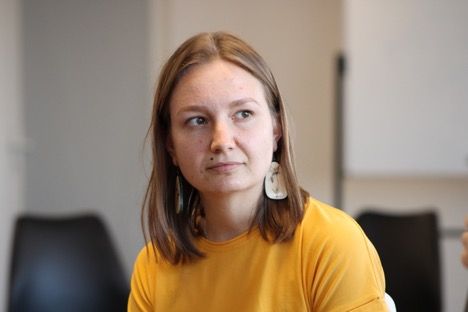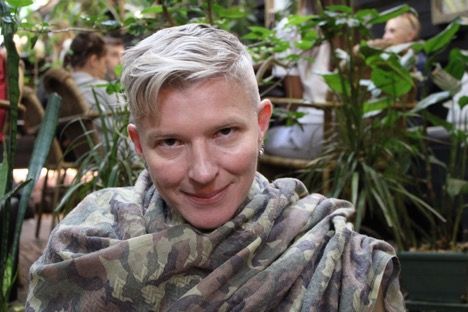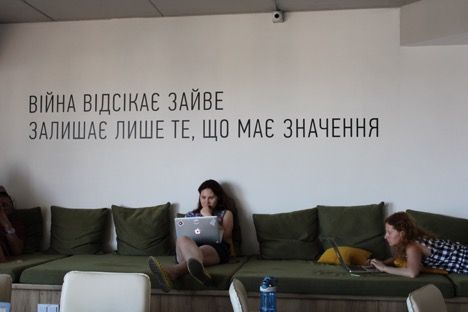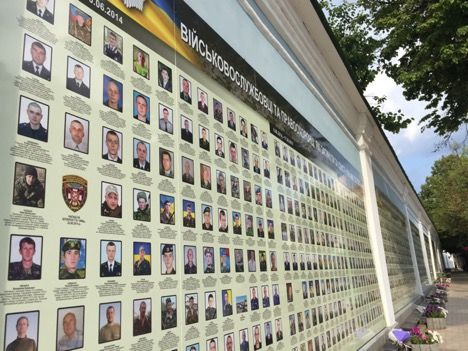The veteran population in Ukraine is made up of both former military members and volunteers. Because of the discriminatory laws excluding women from combat which were repealed in 2016, many of the volunteers in the war in the east of the country were women. Lacking the legal status of veteran is preventing women from receiving the same treatment as men.
Ukrainians did not expect war to strike when it did. In 2014, anti-government and pro-Russian protests swept across the south and east of Ukraine. As Russia’s southwest neighbor with historical ties, Russia supported the protests and spread disinformation about the Ukrainian government. This escalated to war when pro-Russian groups seized government buildings in Donetsk and Luhansk and declared their unification with Russia.
The Ukrainian military, wholly unprepared for a conflict with Russia, did not have enough soldiers or supplies to provide to the east. With the country in incredible need, women stepped in.
Female contributions to the war in Ukraine have been prevalent, varied, and underappreciated. Just as men did, some women joined the military when war first touched their soil. Although women may now serve in combat positions in the military, the law did not allow women into these roles until 2016. Women who wanted to serve turned to volunteer battalions instead.
Volunteers made up a large portion of those fighting in the east. Many women felt the duty to serve after the events at Maidan, or what the Ukrainians call “The Revolution of Dignity.” Ukrainians in Kiev occupied Maidan Nezalezhnosti, or Independence Square, after then president Viktor Yanukovych did not follow through with an agreement with the European Union.
Maidan lasted from November 2013 until August 2014. Estimates on the number of deaths at the protests range from 110 to 123 killed. Several of the female volunteers I spoke to decided to go to war after participating at Maidan.
“Traditionally, our men go to war. But when the enemy arrived on our land, even the women took the rifle and ran to war,” said Lana Krombeth, a volunteer. Krombeth recalls being “baptized” into the military after witnessing the protests at Maidan.
“At that moment after Maidan, everyone was full of patriotic emotions and everyone felt this unity,” said Katerina Prymak, a volunteer medic. “And definitely it was the defenders of Maidan who were the first to go as volunteers to start the front line.”
The story of women serving in volunteer battalions became more popular after the non-profit Invisible Battalion aimed to normalize the stories of female veterans of the war in Ukraine with a documentary by the same name.
Andriana Susak, a heroine from the documentary, served as an assault trooper in a battalion before it was legal for women to do so. Her paperwork noted that she was a seamstress. During an operation, she covered her face with paint and secretly joined the fighting. In a second operation, she did the same. When the 10 men fighting noticed her and her contributions, they asked her to continue with them.
“I didn’t have experience,” she told me in an interview. “I just did everything possible to make free my land, to make free my country, and I did everything possible for me to be useful.”
Another heroine from the film, Yuliia Paevska or “Taira,” wanted to serve as a combat medic. After providing medical assistance at Maidan, she traveled to the east to be a volunteer. She now serves as the commander of a volunteer medical battalion.
“I’m a person who doesn’t follow people’s rules. I have my own mission and I’m following that: honor and responsibility and to help my country,” Paevska said.
Because of the informal nature of the volunteer forces, there is no official estimate of how many women have participated as volunteers. There is no data surrounding what types of women participated, for how long, their ages, etc. Perhaps most important, there is no way for thousands of women to prove that they were volunteers to receive benefits.
The aftermath of the volunteer crisis leaves the current government with a problem: how to give benefits to a population they do not know. Women are disproportionately affected by a lack of government assistance when they return home.
In order for women of the war to receive assistance from the government, there must be much more information collected about the volunteers. The Ministry of Veterans Affairs was established only in late 2018. One of the goals of the ministry is to collect data on all veterans, including volunteers, and provide more services.
Non-profit organizations have worked to fill in the gaps in services left by the government. Ivona Kostyna manages one such organization called Veteran Hub. This center is open to all people from the security sector. They do not ask for official paperwork in order to be inclusive to undocumented volunteers.
Veteran Hub offers several programs such as emotional support animals, housing, psychological services, free work spaces, job assistance and more. There are also a dozen other non-profit organizations housed at Veteran Hub that work for veterans.
One organization, Legal 100, works on behalf of the volunteer force from this conflict. Legal 100 provides legal services to veterans including volunteers. Currently, the organization is helping to push for legislation to give volunteers legal veteran status. Only volunteers who can prove their service with an injury or who have been killed in action are eligible for veteran benefits.
Yuliia Shavchuk, a volunteer medic, faces hardship due to her lack of veteran status. While working on an ambulance on the front line, a bomb exploded and threw her to wall. She had a traumatic brain injury and shrapnel wounds. She waited 10 hours before being evacuated to treat her wounds.
To this day, Shavchuk spontaneously goes unconscious as a result of her injuries. While medicine can help her, she is not eligible for the pharmacy benefits of a legal veteran. She cannot always afford her medicine and must go without.
When asked what the war needs most right now Shavchuk responded, “The soldiers that I am helping, they need support.” There is not universal support for veterans in Ukraine. This adds additional trouble to women seeking support after volunteering in the conflict.
“For some people, our soldiers are a problem,” Shavchuk said.
The divide in the country over the war, a result of both information warfare and authentically differing opinions, affects the support that veterans receive. Yuliia Morii, a lawyer at Legal 100, looks to the United States’ treatment of veterans as an example of the honors they would like to see given to volunteers and veterans alike.
“I think that the country was not prepared for war then, but now it has been 5 years and we live among veterans,” she said. While the country struggles with how to handle the number of volunteers, it must also face how to treat them while being inclusive toward women.
While the invisible battalions are becoming more visible, the government and organizations must find ways to account for the largely undocumented female veteran population in Ukraine.







